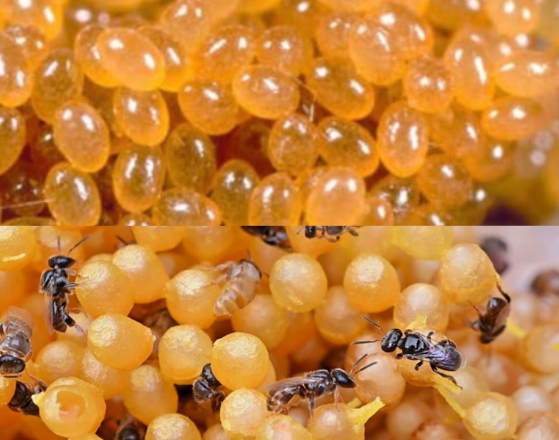What is the stingless bee?
Stingless bees, belong to the Meliponini tribe. Unlike common honeybees, they do not have functional stingers and are generally non-aggressive. They are native to tropical and subtropical regions.

What are the uses of stingless bee eggs?
Stingless bee eggs are sometimes used in traditional medicine or consumed as a delicacy in certain cultures. In some places, they are believed to enhance vitality and have nutritional benefits, although scientific evidence on these effects is limited.
How do stingless bees reproduce?
Stingless bees reproduce through a queen bee that lays eggs in wax pots built by worker bees. The eggs hatch into larvae, which develop into worker bees, drones (males), or new queens depending on the nutrition they receive and the colony’s needs.
What role do stingless bees play?
Stingless bees are essential pollinators for many wild and cultivated plants. They contribute greatly to biodiversity, food production, and ecological balance. Some farmers even raise stingless bees for crop pollination and honey production.
What is the value of stingless bees?
Stingless bees produce honey known as “medicinal honey,” which is more expensive than regular honey due to its unique properties and low production volume. They also play a vital role in sustainable agriculture by enhancing crop yields through pollination.
What should I do if I suddenly find a bunch of stingless bee eggs?
If you come across stingless bee eggs unexpectedly:
- Do not disturb or destroy them.
- Observe from a safe distance without touching.
- These bees are harmless but important; consider contacting a local beekeeper or agricultural department to relocate the nest safely if needed.